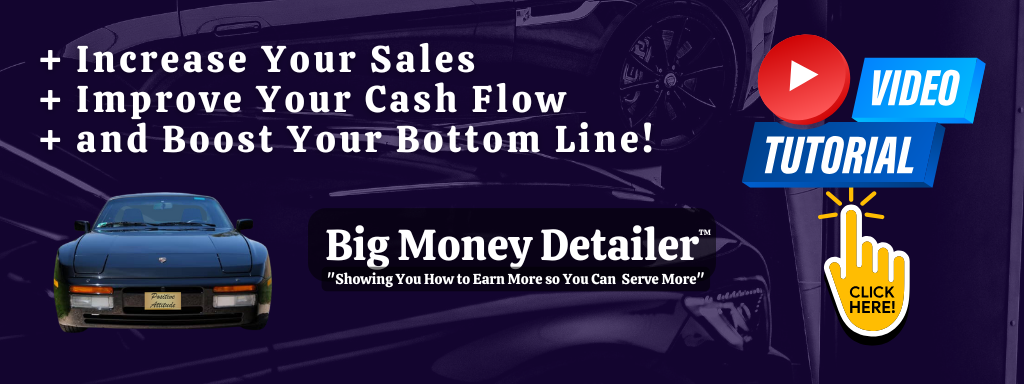1. Creating Valuable Content
Understanding Your Audience
When it comes to blogging, the very first step I always take is to truly understand my audience. What are their interests? What challenges are they facing? By diving deep into these questions, I can tailor my content to provide real value. It’s not just about throwing random tips out there; it’s about addressing specific pain points that resonate with them.
For instance, if my audience consists of aspiring entrepreneurs, I would focus on sharing insights that help them navigate the ups and downs of starting a business—everything from financing to marketing strategies. This targeted approach not only educates but also keeps my readers engaged, making them feel seen and understood.
Moreover, I find that active engagement—like asking questions or creating polls—can open a dialogue that gives me even more insight into their needs. This way, each post isn’t just a monologue; it becomes part of a larger conversation, fostering a sense of community.
Providing Actionable Insights
One of the key challenges in blogging is ensuring that the content I share is actionable. It’s great to provide information, but if I can’t translate that info into practical steps, I’m missing the mark. I like to break down complex topics into bite-sized pieces that my readers can easily implement.
For example, instead of just writing about marketing strategies, I take it a step further by giving readers a checklist they can follow. This not only boosts their confidence but also encourages them to act. Seeing results from my advice is incredibly rewarding, and it definitely keeps them coming back for more.
Additionally, I often invite my audience to share their own experiences with the insights I provide. This not only enriches the content but also helps others who might be reading, thus enhancing the community vibe of my blog.
Regular Updates and Trends
Staying current is non-negotiable in the blogging world. I make it a priority to keep my blog relevant by sharing the latest trends and updates in my niche. By doing so, I position myself as a trusted source, someone who’s in the know.
Regular updates not only educate my audience but also engage them by sparking discussions. For example, I often write about emerging social media trends and how they can impact businesses. This not only provides valuable information but also encourages readers to share their thoughts in the comments section.
Incorporating real-world examples and recent case studies makes my posts not only informative but relatable. When readers see that I’m discussing actual events and developments, it adds a layer of credibility to my writing.
2. Building a Community
Encouraging Interaction
One of the coolest aspects of blogging is the opportunity to build a community around shared interests. I always encourage my readers to comment, ask questions, and share their experiences. It’s amazing how these little interactions can foster a strong community.
I often pose questions at the end of my posts, inviting readers to share their thoughts. This not only raises engagement but gives me insight into their preferences. When they respond, it feels like I’m having a conversation rather than just broadcasting information.
Additionally, I love featuring some of my readers’ comments or experiences in future posts. It not only makes them feel appreciated but also encourages other readers to participate, knowing their voices might be heard.
Creating a Safe Space
Creating a welcoming environment is crucial for fostering community. I strive to make my blog a safe space where readers feel comfortable expressing their opinions, even if they differ from mine. It’s all about embracing diversity of thought.
I make it a point to moderate comments respectfully, addressing any negativity by guiding discussions back to a positive note. This not only fosters healthy debates but also strengthens the bond among my readers, creating a sense of belonging.
The more people feel connected to my blog, the more likely they are to return—and that’s a win-win in my book!
Hosting Events and Collaborations
Engagement doesn’t just stop at the blog; it can extend to hosting events or collaborations with other bloggers. I’ve found that organizing webinars or live Q&A sessions allows for real-time interaction, which fuels even more engagement.
These events not only provide additional value but also allow my community to connect with each other. It’s nice seeing readers form friendships or partnerships based on their shared interests sparked by the blog!
Plus, collaborating with other bloggers or experts brings fresh perspectives and ideas. This not only enriches the content but introduces my audience to new voices they may not have heard of. It’s all about creating an ecosystem of learning and sharing.
3. Enhancing Brand Authority
Showcasing Expertise
Blogging is a phenomenal way to showcase my expertise in my field. By consistently producing high-quality, informative content, I establish myself as an authority that people trust. It’s not enough to just have credentials; I need to demonstrate my knowledge regularly.
I like to write detailed posts that delve into niche topics, using research to back up my claims. When readers see that I’m knowledgeable and dedicated, they’re more likely to return and refer others to my blog. It’s a powerful way to enhance my credibility.
Additionally, I share case studies and personal anecdotes that effectively demonstrate my expertise in action. This not only educates my audience but also humanizes my brand, making it relatable and trustworthy.
Engaging with Influencers
Connecting with other industry influencers is a superb way to enhance credibility. I often reach out for guest blog opportunities or interviews, which not only adds value to my content but also showcases my connections.
When I collaborate with well-respected figures in my niche, it not only bolsters my authority but also increases my visibility. Readers are more likely to take my advice seriously if they see that esteemed experts are backing me up.
These relationships often lead to sharing insights, tips, and even cross-promotion, which nurtures my blog’s growth significantly.
Consistency and Professionalism
Being consistent in my blogging efforts is key to reinforcing my brand authority. I find that having a regular posting schedule keeps my audience engaged and looking forward to new content. It tells them I’m serious about my blogging and committed to providing ongoing value.
Moreover, making sure my blog has a professional appearance goes a long way. Easy navigation, great design, and attention to detail in my posts add to the credibility. Readers are less likely to take me seriously if my blog looks haphazard.
In the end, consistency and professionalism build trust, which is the cornerstone of a solid brand reputation.
4. Leveraging SEO Strategies
Keyword Research
To reach a broader audience, I can’t overlook the power of SEO. Keyword research is the first step in my blogging strategy. Identifying relevant keywords that my audience is searching for helps ensure my content gets found.
I often use free tools to discover what keywords are trending and tailor my blog topics around them. By incorporating these targeted keywords naturally into my content, my blog becomes more searchable and accessible for readers.
Keep in mind, though, it’s important to strike a balance. I want my content to be engaging and authentic, not stuffed with keywords that disrupt the flow of my writing.
Optimizing Blog Posts
Once I’ve got my keywords, optimizing each blog post becomes crucial. This includes crafting catchy titles, meta descriptions, and using header tags effectively. Each of these elements plays a role in how well my post performs in search engines.
I also ensure my images have alt text, as it boosts SEO and helps visually impaired readers understand my content better. I mean, I want to reach as many people as possible while being inclusive!
Regularly updating old posts with fresh information and keywords is another great way to keep my blog relevant in search results. This ensures I’m continually providing value while enhancing the blog’s visibility.
Tracking Analytics
Finally, diving into analytics is a critical part of my blogging journey. By tracking which posts are gaining traction and audience demographics, I can fine-tune my content strategy to better meet my readers’ needs.
Tools like Google Analytics give me insights into where my traffic is coming from and what resonates most with my audience. This information is gold when it comes to planning future blog topics and optimizing existing content.
Ultimately, staying informed about my blog’s performance allows me to adapt and improve continuously, ensuring that I’m always providing the best experience for my audience.
5. Sustainable Growth
Building an Email List
One of the most valuable assets a blogger can have is an email list. I can collect emails through lead magnets or opt-in forms to keep my readers updated about new content and relevant insights.
This direct line of communication allows me to foster deeper relationships with my audience. When I send out newsletters filled with exclusive content or tips, it feels personal, like I’m sharing my thoughts with friends.
Building an email list not only keeps my audience engaged but can also drive traffic back to my blog consistently, creating a loop of value exchange.
Monetizing Content
As my blog grows, exploring monetization opportunities becomes a logical next step. Whether through affiliate marketing, sponsored posts, or creating my products, it’s important I stay true to my brand and provide value.
For instance, I enjoy recommending products that I genuinely believe in. It’s all about creating win-win situations where my readers get recommendations while I earn a commission, all while maintaining transparency.
Additionally, offering online courses or eBooks is another great way to monetize while educating my audience. I can share extensive knowledge in a structured format that provides even more value.
Setting Long-Term Goals
Every successful blog needs a vision. Setting long-term goals helps keep me focused and motivated. I like to think about where I want my blog to be in a year, three years, or even five years.
Whether that means expanding my audience, launching a product, or writing a book, having these objectives lays the groundwork for my daily efforts. It’s about working steadily towards those goals while adjusting strategies along the way.
In the end, sustainability in blogging isn’t just about attracting readers. It’s about building something meaningful that can grow and adapt alongside both my audience and my own journey.
Frequently Asked Questions
1. Why is understanding my audience so important when blogging?
Understanding your audience helps you tailor content to their interests and challenges, making your blog more relevant and engaging.
2. How can I encourage interaction on my blog?
Ask open-ended questions at the end of your posts and actively respond to comments. Creating polls also invites participation and keeps the conversation flowing.
3. What are some good ways to build an email list?
Offer lead magnets like free eBooks, checklists, or exclusive content in exchange for email sign-ups. Make it easy for readers to subscribe by placing opt-in forms attractively throughout your blog.
4. How should I approach keyword research for SEO?
Use tools like Google Keyword Planner or Ubersuggest to identify popular search terms. Focus on keywords that are relevant to your niche and have low competition for better visibility.
5. Can I monetize my blog without compromising its integrity?
Absolutely! Ensure you only promote products or services you genuinely believe in. Authenticity goes a long way in maintaining trust with your audience while exploring monetization options.



